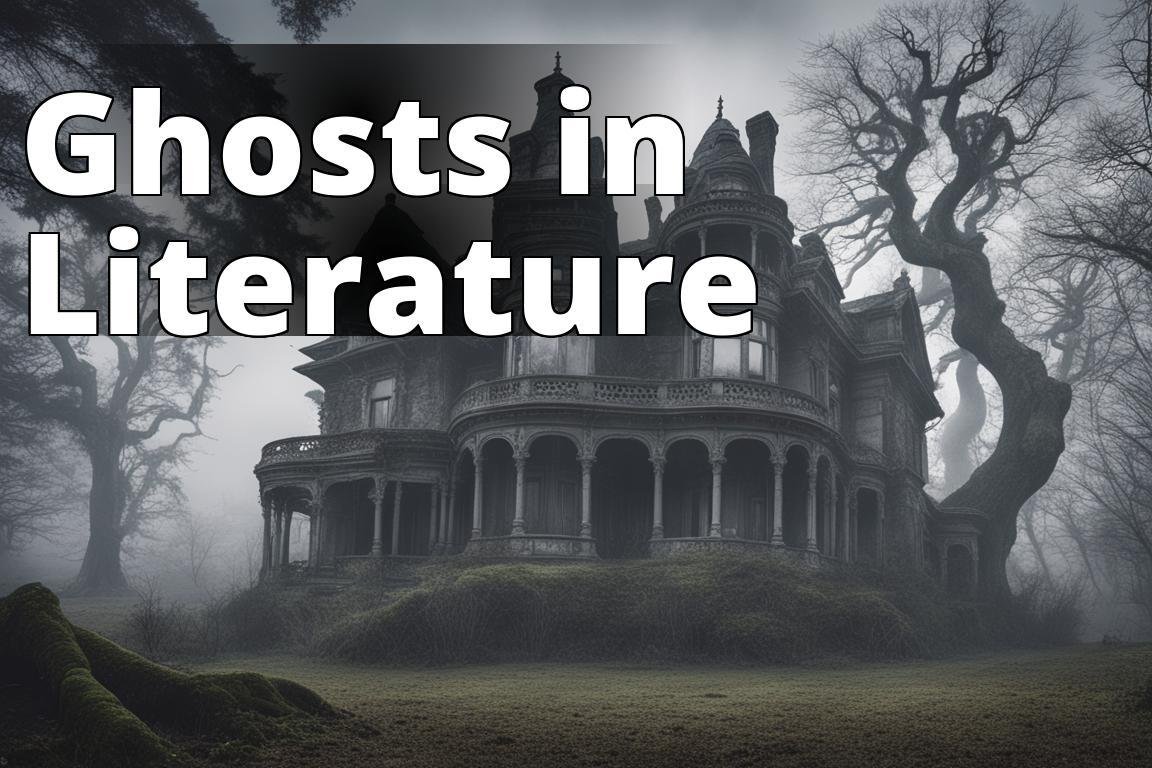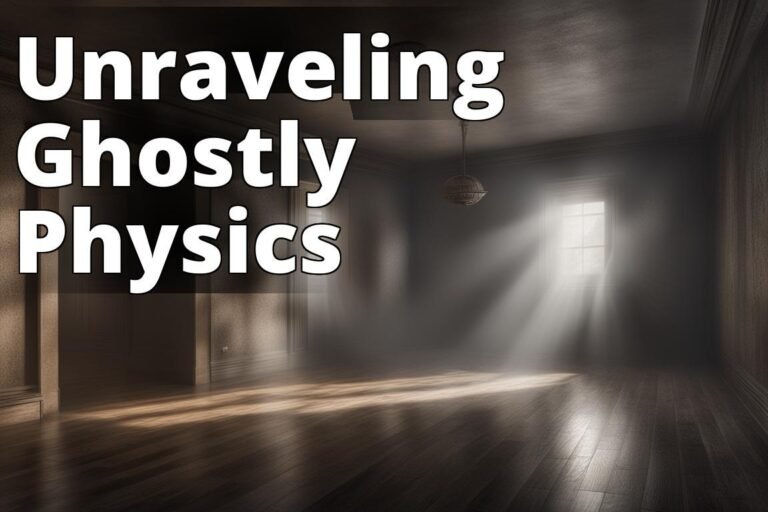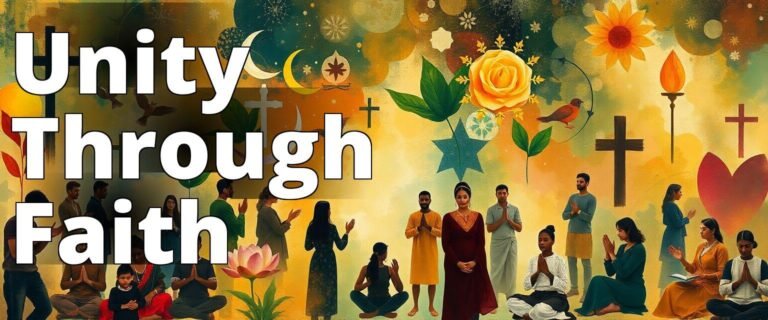Ghosts in Literature
Ghosts in literature: what do they mean, and why do they fascinate us so? This is not your run-of-the-mill exploration of spectral entities. We’re delving deep into the heart of phantoms that haunt our pages, exploring the corners of our imagination that these ethereal beings occupy. From the eerie moors of the British Isles to the haunted houses of American gothic tales, ghosts have been a central figure in storytelling for centuries. They are more than just characters; they are symbols of our deepest fears, unfulfilled desires, and the mysteries of the afterlife.
Learn about Ghosts in Literature
- Ghosts in literature symbolize themes such as the supernatural, the unknown, and the afterlife.
- Famous authors like Edgar Allan Poe, Charles Dickens, and Shirley Jackson have contributed to the ghost story genre in literature.
- Ghosts in poetry and drama also play a significant role in exploring the paranormal and mysterious elements of human existence.
Ghosts in Literature
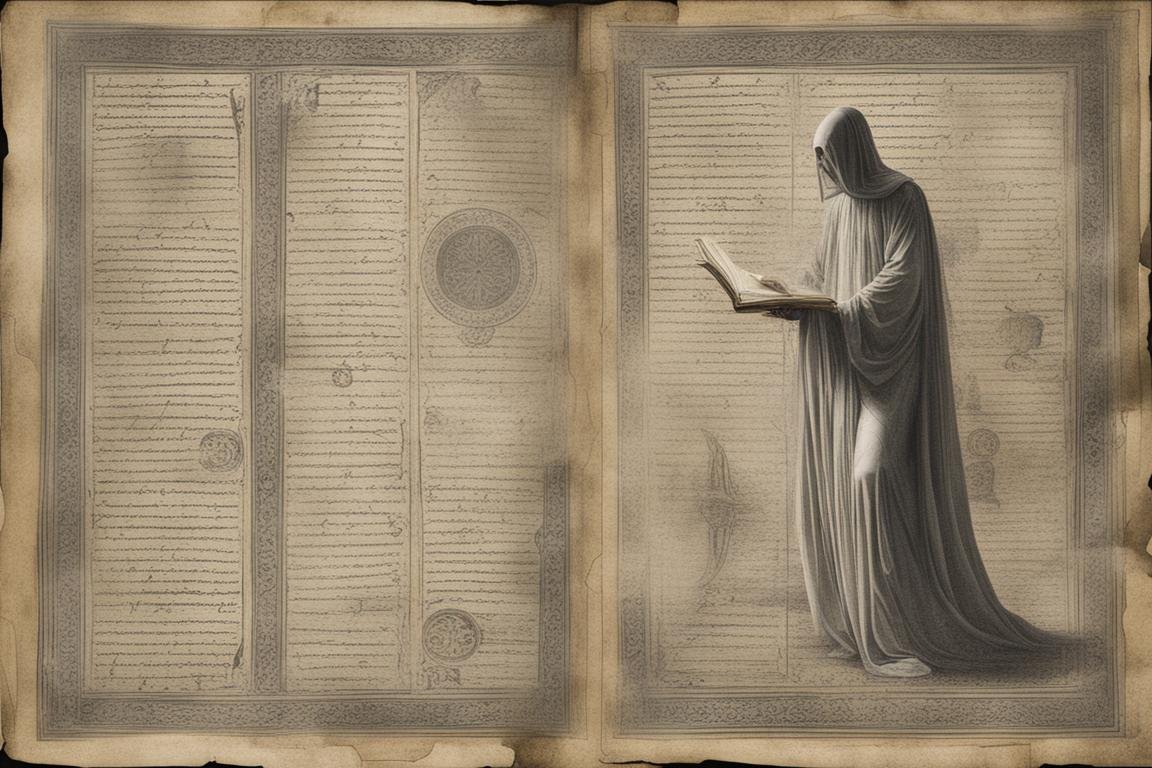
Ghosts have always provided a compelling narrative device in literature, serving as a bridge between the living and the dead, the past and the present. They are the thin white lies that authors weave into their stories to elicit fear, suspense, or even comfort.
The Ghost Story
The allure of the ghost story lies in its versatility. It can be a chilling tale whispered in the dark, a psychological thriller that plays tricks on the mind, or a poignant narrative of loss and longing. Ghost stories have the power to evoke a wide range of emotions, making them a perennial favorite among readers and writers alike.
The Ghost Story in Literature
The evolution of the ghost story in literature is a fascinating journey. Each era brought its own flavor to the phantom tale, reflecting the societal fears and fascinations of the time.
The Golden Age of the Ghost Story
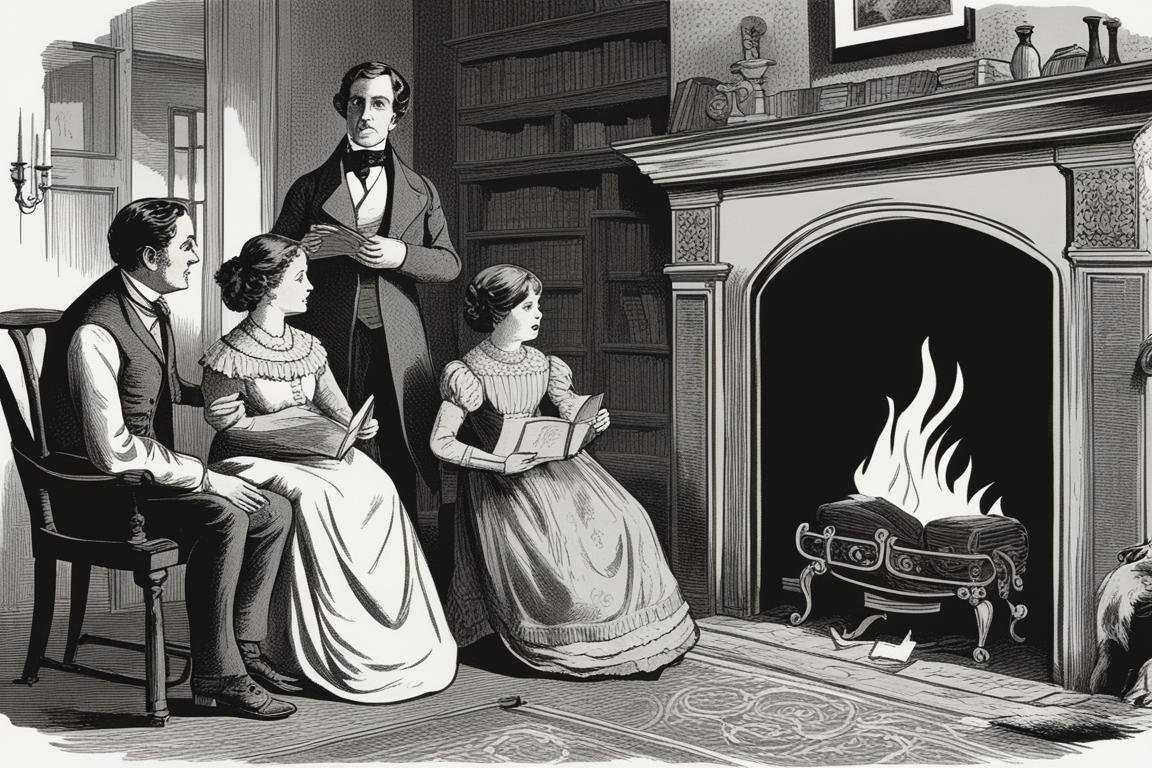
The Victorian era is often hailed as the golden age of the ghost story. This was a time when the fascination with the supernatural reached its zenith, fueled by the era’s obsession with death and the afterlife. The Victorians had a morbid curiosity about what lay beyond the grave, and ghost stories provided a thrilling glimpse into that unknown world.
The Victorian Era
The Victorian ghost story often featured haunted houses, spectral visitations, and moral lessons. It was not just about fear; it was about conveying messages on morality, loss, and the consequences of one’s actions.
The Edwardian Era
As we transitioned into the Edwardian era, the ghost story began to take on a more psychological dimension. This was a reflection of the changing times, with advancements in psychology influencing the way ghosts were portrayed. The Edwardians were less concerned with moral lessons and more interested in the complexities of the human mind.
The Modern Era
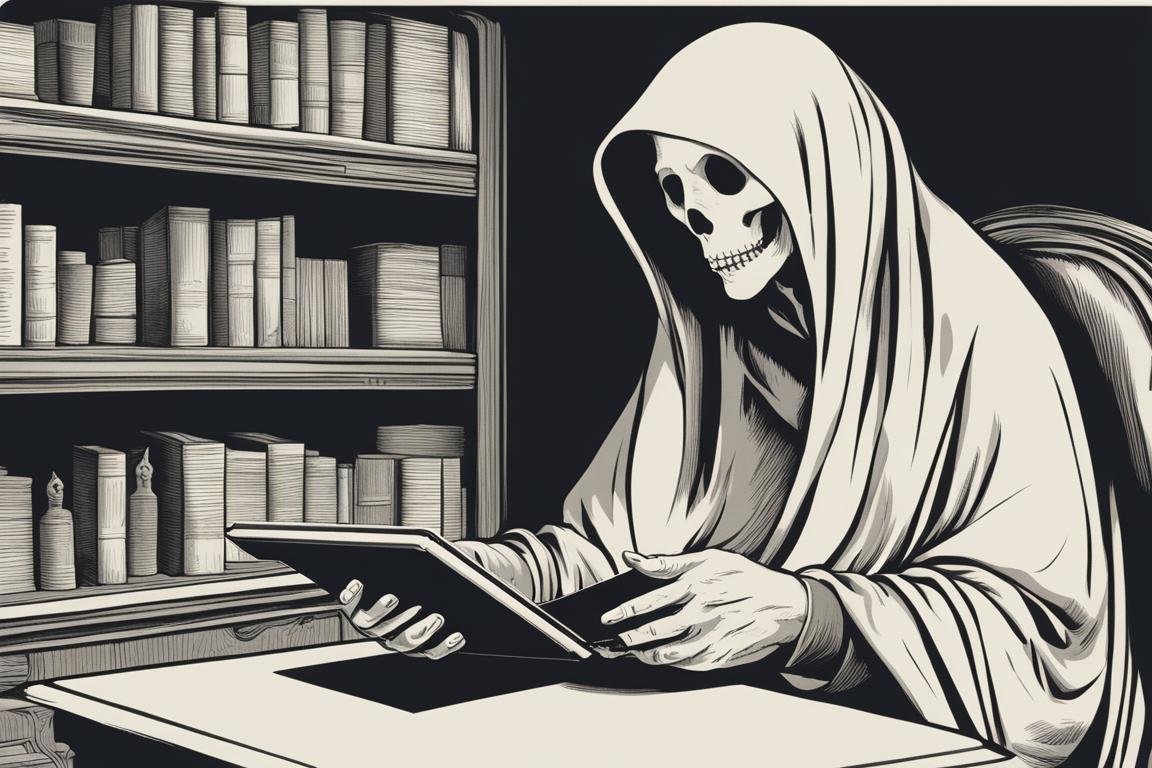
Today, the ghost story continues to evolve, reflecting our current fears and societal issues. Modern ghosts might inhabit not just old mansions but also the corridors of power, the vastness of the internet, or the depths of our own psyche. The essence of the ghost story remains the same, but its manifestations are ever-changing.
Famous Ghost Stories and Authors
Ghosts in literature owe much of their allure to the master storytellers who have crafted these chilling tales. Let’s shine a light on some of the luminaries of the genre.
Edgar Allan Poe (1809-1849)
Poe is synonymous with the macabre, and his ghost stories are no exception. His tales are a masterclass in building atmosphere and suspense, often leaving readers with a lingering sense of unease.
Charles Dickens (1812-1870)
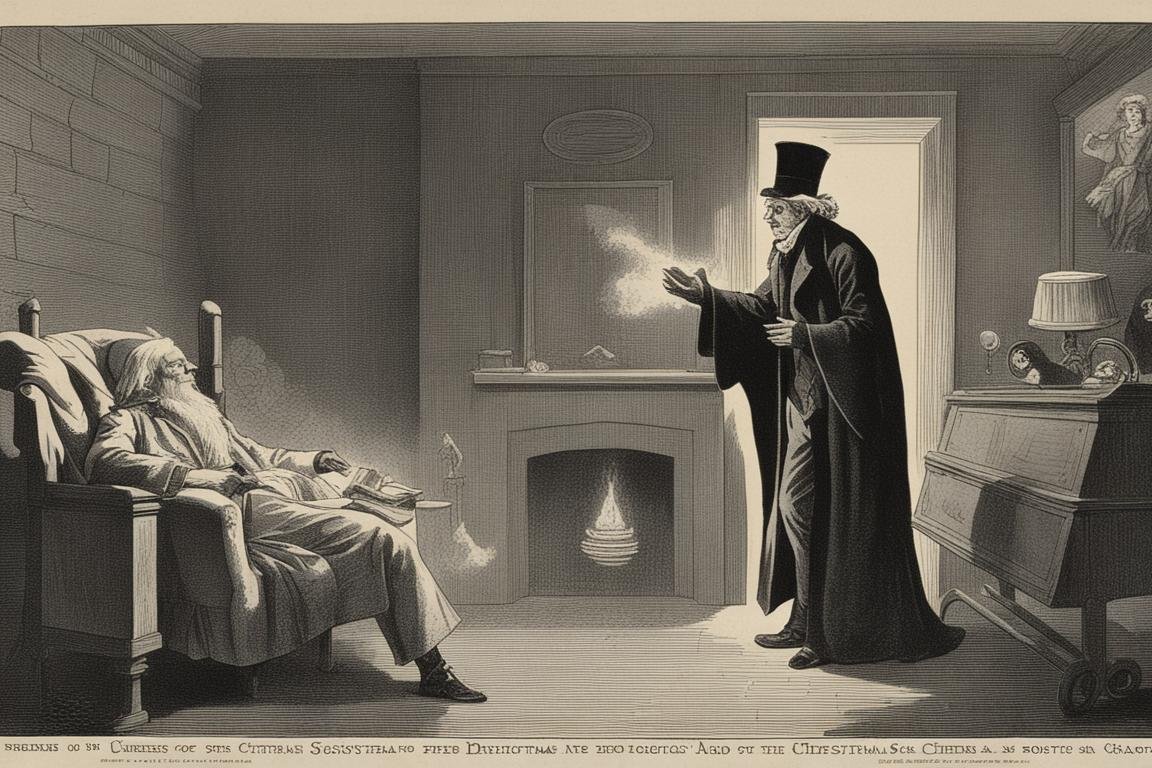
Dickens’ “A Christmas Carol” is perhaps the most famous ghost story of all time. It’s a tale of redemption that has captured the hearts of readers for generations, proving that ghost stories can have a profoundly positive impact.
M.R. James (1862-1936)
James revitalized the ghost story by introducing the antiquarian ghost story, where the past haunts the present in the form of cursed objects or ancient rituals gone awry. His stories are known for their understated horror and psychological depth.
Henry James (1843-1916), Edith Wharton (1862-1937), Algernon Blackwood (1869-1951), Shirley Jackson (1916-1965)
Each of these authors brought their unique voice to the ghost story, exploring themes of isolation, madness, and the supernatural with unparalleled skill. Their stories are timeless, continuing to haunt the imagination of readers today.
The Haunted House in Literature
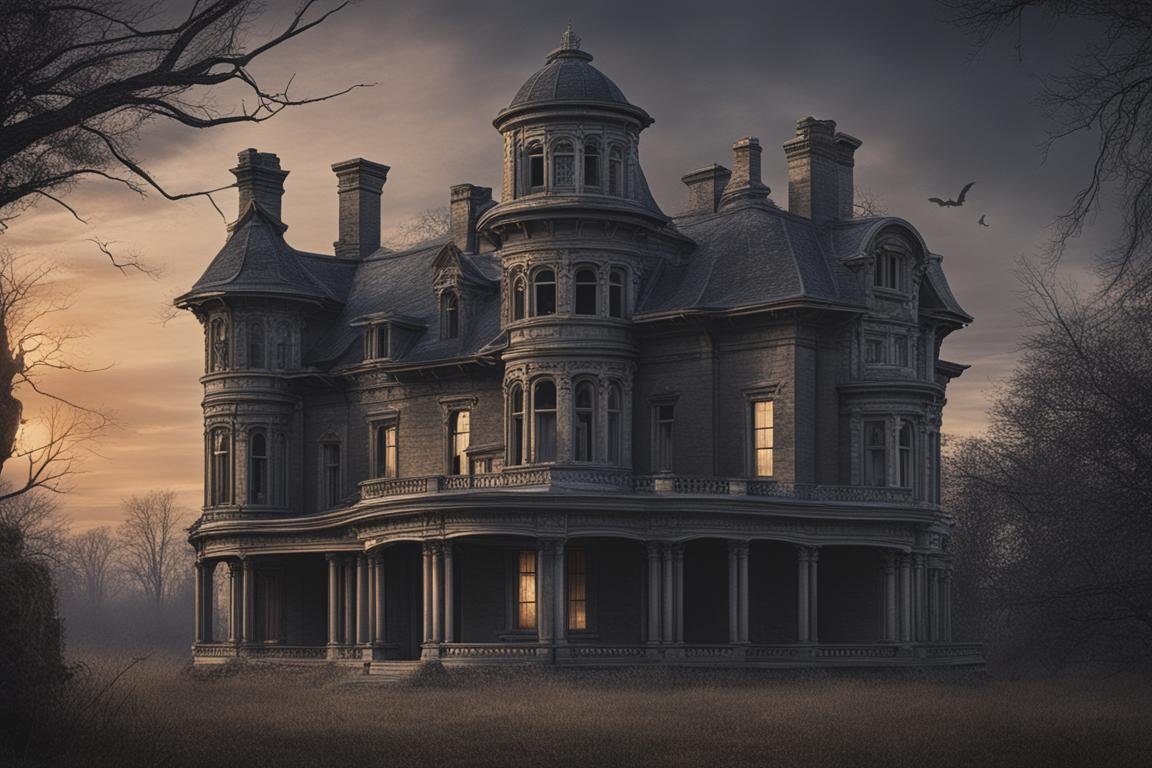
The haunted house is a staple of ghost literature, a character in its own right. These houses are more than just settings; they symbolize the past’s grip on the present, the unseen forces that shape our lives, and the dark corners of the human soul.
Ghosts in Poetry
Poetry provides a unique medium for exploring the theme of ghosts. The rhythm and flow of verse can evoke the ethereal, otherworldly quality of ghosts in a way that prose cannot.
Famous Poems About Ghosts and Hauntings
Poets like Edgar Allan Poe, Emily Dickinson, and Samuel Taylor Coleridge have penned haunting verses that capture the essence of the ghostly experience. Their poems are a testament to the power of language to conjure the spectral and the supernatural.
Ghosts in Drama and Theater
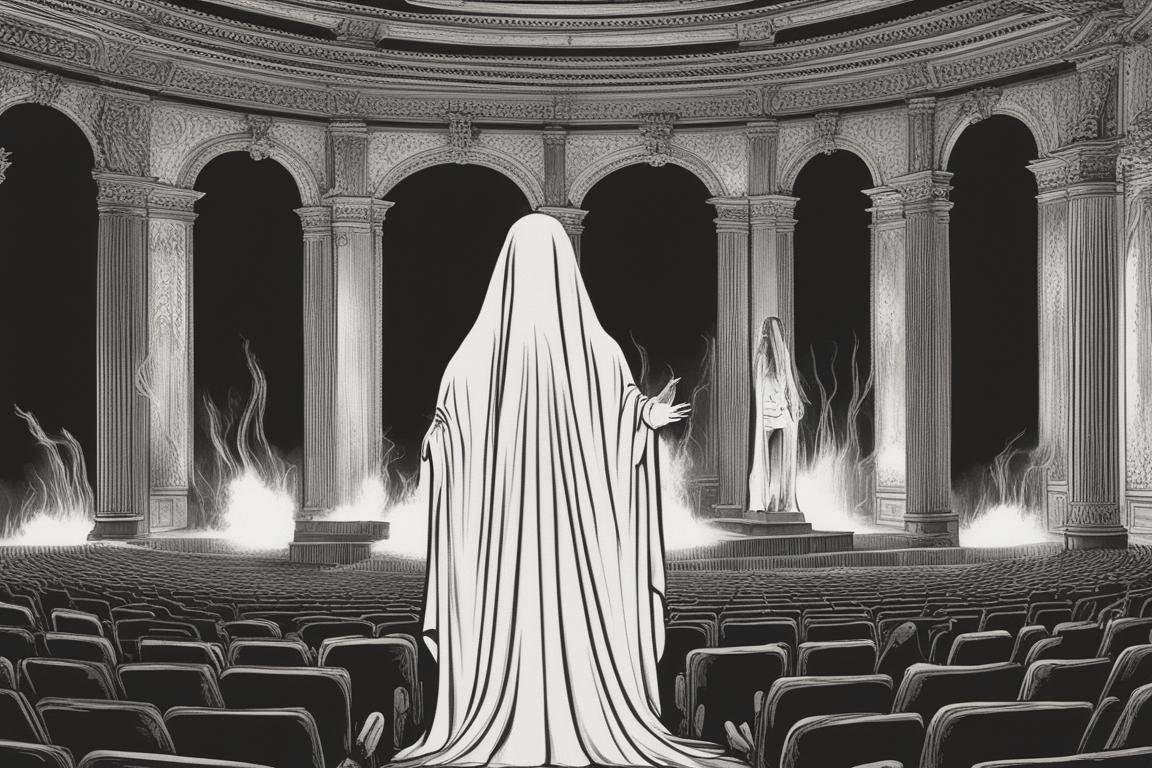
The theater brings ghosts to life, literally. Plays like Shakespeare’s “Hamlet” and Henrik Ibsen’s “Ghosts” use spectral characters to explore themes of guilt, retribution, and the inescapable past. The physical presence of ghosts on stage adds a visceral dimension to their haunting.
Famous Plays About Ghosts and Hauntings
These plays demonstrate the enduring appeal of ghosts in drama. They remind us that, despite our advancements in science and technology, the ghost story’s power to captivate and terrify remains undiminished.
Conclusion
Ghosts in literature are a mirror reflecting our deepest fears, desires, and questions about the unknown. They are a testament to our enduring fascination with the afterlife and the unseen forces that shape our world. From the whispered tales of the Victorian era to the digital hauntings of the modern age, ghosts continue to haunt the pages of our stories, proving that some thin white lies never fade away.
For more spectral explorations and literary hauntings, navigate your way back to the home of all things eerie at Thin White Lies.
Answers To Common Questions
Who are ghosts in literature typically portrayed as?
Ghosts in literature are often depicted as restless spirits of the deceased.
What is the significance of ghosts in literary works?
Ghosts in literature symbolize unresolved issues or past traumas.
How do authors use ghosts to enhance their stories?
Authors use ghosts to create an eerie atmosphere and explore themes of mortality.
Who might object to the portrayal of ghosts in literature?
Some readers may object to ghosts being portrayed as malevolent entities.
What do ghosts represent in terms of the human experience?
Ghosts in literature can represent guilt, grief, or the fear of the unknown.
How do ghosts contribute to the overall meaning of a literary work?
Ghosts often serve as a metaphor for the lingering effects of the past on the present.

